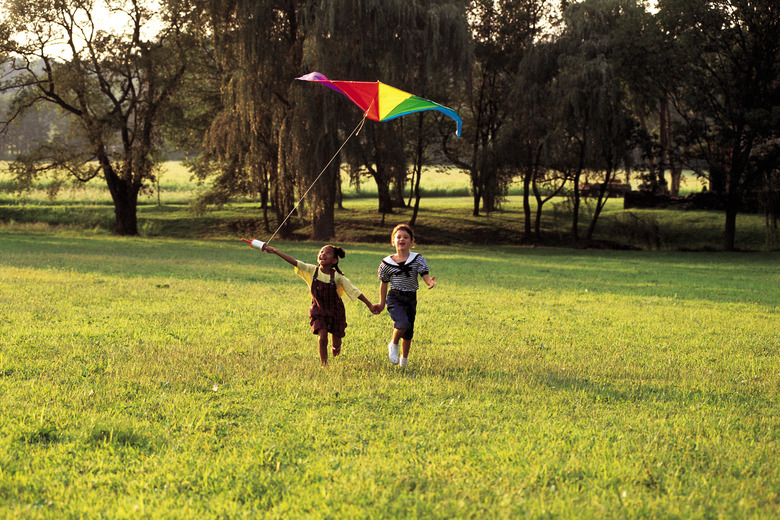First-Grade Lesson On The Wind
Weather is a common component of the first-grade science curriculum, which encourages kids to explore and understand the natural world. You can't actually see the wind, but first-graders can observe the effects of wind with hands-on activities.
Wind Stories
Wind Stories
Children's books about the wind can introduce the topic. Both fiction and nonfiction books will get kids thinking about wind and how it affects the Earth. Examples include "When the Wind Blows" by Richard Hutchings, "The Windy Day" by Anna Milbourne, "The Wind Blew" by Pat Hutchins and "Feel the Wind" by Arthur Dorros. After reading the books, make a list of characteristics about wind or things the wind does, such as moving clouds and blowing objects around.
Wind Observations
Wind Observations
You'll need a day with at least a light breeze for this activity. The goal is to get the first-graders to focus on the effects of wind they can observe around the school. Start by looking out classroom windows for examples of the wind at work, such as branches moving or leaves blowing across the ground. Take a walk around the playground or through the neighborhood to find other signs of the wind. Make a list of what you see. You can do another wind observation on a day with stronger wind to compare how the objects move. For example, the first-graders might notice that the branches move more or leaves move faster on a windier day.
Wind Experimentation
Wind Experimentation
After observing how wind affects the environment, it's time to let the kids make predictions and test the impact of the wind. You'll need a variety of materials of different weights and sizes, such as:
- paper bags
- cardboard
- newspaper
- wood
- rocks
- fabric
Ask the first-graders to predict how the wind will affect the objects. Have them predict whether the wind will be able to move them. You might also ask how they think the object will move. For example, they might predict that something light, like a paper sack, will blow up into the air, while something heavy, such as a small piece of wood, might move just slightly. Test each item outside on a windy day to see if the predictions were correct.
Wind Measurement Tools
Wind Measurement Tools
Turn the first-graders into junior meteorologists with some simple tools. A weather vane shows the kids that wind blows from different directions. Place a weather vane on the playground so kids can observe the wind direction changes. An anemometer is another weather tool that shows how fast the wind is blowing. It has cup-like structures that catch the wind and spin faster the windier it is. You can also put simple pinwheels in the ground outside the classroom. Have kids observe the pinwheels to see how fast the wind is blowing. Flying kites is another activity to use during a lesson on wind. The kids can watch how the kite moves with the wind.
Cite This Article
MLA
Frost, Shelley. "First-Grade Lesson On The Wind" sciencing.com, https://www.sciencing.com/firstgrade-lesson-wind-8708886/. 24 April 2017.
APA
Frost, Shelley. (2017, April 24). First-Grade Lesson On The Wind. sciencing.com. Retrieved from https://www.sciencing.com/firstgrade-lesson-wind-8708886/
Chicago
Frost, Shelley. First-Grade Lesson On The Wind last modified August 30, 2022. https://www.sciencing.com/firstgrade-lesson-wind-8708886/
